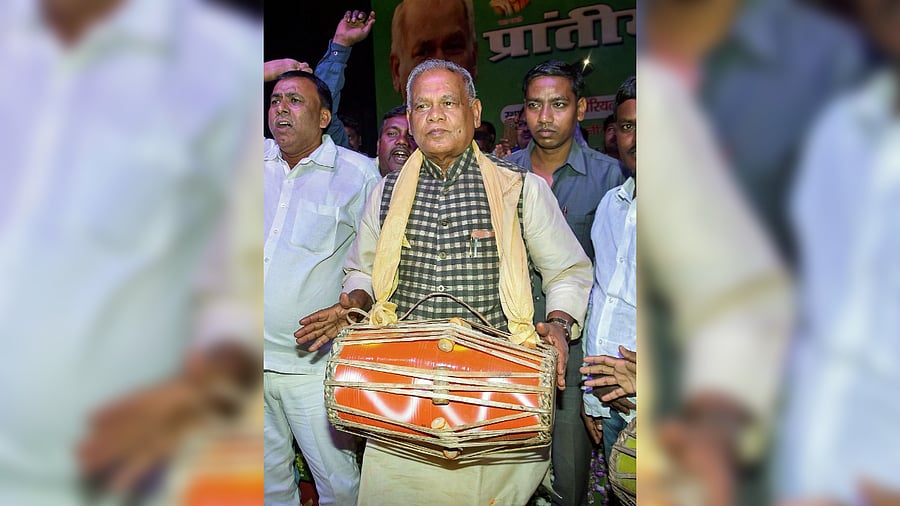
Jitan Ram Manjhi, Bihar Minister of MSME, is widely regarded within the Musahar community as a leader who understood their struggles. Long among Bihar’s most marginalised Dalit groups, the Musahars, constituting 3.08% of the State’s population, are increasingly being seen as a distinct electoral bloc.
Bihar’s Assembly polls were officially announced on October 6. The Election Commission of India’s final roll lists 7.42 crore electors, after a Special Intensive Revision removed nearly 69 lakh entries while adding about 21.5 lakh new names.
In this charged atmosphere of voter scrutiny, promise-making, and alliance realignments, there is a quieter but evolving voice of the Musahar community. Long among Bihar’s most marginalised Dalit groups, the 4,035,787 Musahars, constituting 3.08% of the State’s population, are increasingly being seen as a distinct electoral bloc. In a State where Brahmins constitute 3.65%, Rajputs 3.45%, and Bhumihars 2.86%, the Musahars (3.08%) stand out in terms of demographic strength and are far ahead in the pace of electoral participation among historically oppressed groups.
Ground voices and political patterns
Deepa, a young Musahar woman from Jagriti Kendra, speaks with assertive clarity: “Rozgar (employment) is more important than money transfers. Cash in the account is a dilasa (consolation), not a solution,” she says. She adds that Jitan Ram Manjhi, Minister of MSME, widely regarded within the community as a leader who understood their struggles, had created employment opportunities at the grassroots, while Chief Minister Nitish Kumar focused on roads, electricity, and housing. What the community seeks now, she stresses, is employment that ensures dignity.
Her words echo a growing impatience, especially among youth, who want more than symbolic inclusion. Kumar’s Mahadalit policy may have politically recognised the Musahars, but today’s demand is for agency and representation — not welfare.
Interestingly, Deepa’s confidence contrasts with the hesitation often associated with the community. The Musahars, historically treated as ‘Dalit among Dalits’, still carry the weight of generational insecurity. Many remain wary of expressing themselves openly in village meetings or panchayats. But as literacy has risen, the silence is breaking.
In Gaya’s Mohanpur block, teacher and social worker Saurabh Prakash offers a clear-eyed assessment: “Nitish Kumar’s first five years were good. But after 2010, development slowed. People will vote on three things: caste, development, and personal trust.”
According to Prakash, about 25% of Musahar voters now decide based on developmental issues, while another 10% are guided by personal loyalty or resentment toward Kumar. A portion, he admits, is still swayed by money or immediate promises of help. “When you’re poor, ₹5,000 or ₹10,000 can change decisions. But awareness is rising,” he adds.
Such fluidity may confuse pollsters, but it reveals a deeper churn that an electorate is no longer confined to inherited loyalties.
The political geography of aspiration
The Musahars’ emerging confidence draws from a longer history that charts their journey from bondage to belonging. Once branded as bonded labourers and denied land, literacy, and dignity, their steady climb toward self-determination has been both social and political. Central to this awakening stands Dashrath Manjhi, Bihar’s ‘Mountain Man’. His act of cutting through rock to connect his village became a moral metaphor for breaking barriers. To many Musahars, Dashrath Manjhi remains their own Ambedkar — an emblem of endurance and self-fashioned change.
Today, the growing demand to confer the Bharat Ratna on Dashrath Manjhi carries political weight. It signals not only reverence but recognition, and an assertion that the community’s icons, labour, and aspirations deserve national space. Their politics now speak of visibility, not victimhood; of mobility, not charity.
As JNU professor Arvind Kumar Mishra observes in The Marginalized Self, the Musahars are challenging the very frameworks that have long defined them; from being constructed as ‘poor’ and ‘illiterate’ to asserting themselves as agents of progress and identity. Rising literacy, women’s leadership, and a generation unafraid to speak of rights mark a profound shift. Even as hierarchies persist, the Musahars’ politics of aspiration is quietly redrawing Bihar’s democratic map — one that looks less backward in grievance and more forward in resolve.
The future on the ballot
The BJP has rolled out infrastructure packages worth ₹15,053 crore just hours before the announcement of the election schedule. But amidst the roar, the Musahar message from Bihar’s hinterlands is unmistakable. The NDA, the Mahagathbandhan, and newer voices like Jan Suraaj are all competing for their attention, yet the ground mood is no longer about competing promises: it’s about accountability.
In campaign speeches, political leaders are increasingly referencing historically marginalised communities by name. But the Musahars are watching closely: it is not enough to be invoked and there must be follow-through in jobs, education, and meaningful inclusion. Padma Shri awardee and Musahar activist Bhim Singh Bhavesh has called on parties to deliver real equity, not political optics.
This election may well test whether Bihar’s democracy can accommodate more than token gestures. The Musahars are no longer on the margins; they are asking to be central. Their journey from bondage to ballot and from invisibility to assertion is perhaps the truest reflection of Bihar’s democratic promise and upcoming elections.
Sanjay Kumar is founder, Deshkal Society, and co-editor, Interrogating Developments: Insights from the Margins. Shruti is a doctoral scholar and independent researcher. X: @Deshkal_Society, @nishishruti
(Disclaimer: The views expressed above are the author's own. They do not necessarily reflect the views of DH.)